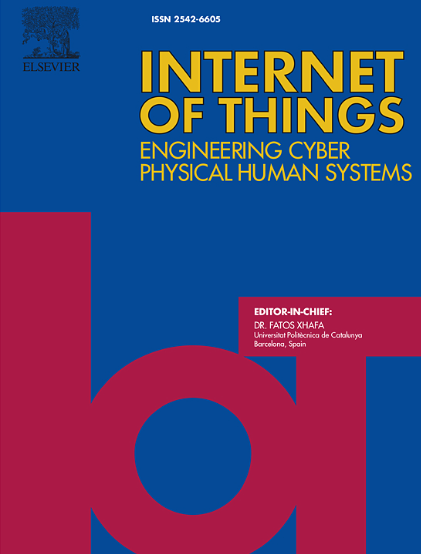XBiDeep: A novel explainable artificial intelligence based intrusion detection system for Internet of Medical Things environment
IF 7.6
3区 计算机科学
Q1 COMPUTER SCIENCE, INFORMATION SYSTEMS
引用次数: 0
Abstract
In this study, an IDS XBiDeep based on the use of deep learning architectures for the IoMT - IoHT environments is proposed. To evaluate the performance of the proposed technique, three different datasets collected from IoMT environments: CICIoMT2024, IoMT-TrafficData, and ECU-IoHT are used. CICIoMT2024 and ECU-IoHT possess imbalanced data structures, while IoMT-TrafficData contains a balanced structure, allowing the effectiveness of the model to be examined across both balanced and imbalanced datasets. Rather than performing a simple binary classification between attack and benign data, multi-class classification is conducted to investigate various attack types. To achieve high performance across all IoMT datasets, RNN, LSTM, GRU, BiLSTM, and BiGRU architectures are tested individually and in hybrid configurations. The best results are observed with the hybrid BiGRU-BiLSTM model, which is subsequently integrated into the proposed XBiDeep architecture. Specifically, it reached 0.9975 accuracy for 6-class classification and 0.9985 for 19-class classification on the CICIoMT2024 dataset. On the IoMT-TrafficData dataset, the model attained 0.9990 accuracy, while 0.9987 accuracy was obtained on the ECU-IoHT dataset. The outcomes of the created architecture are analyzed using XAI models: SHAP and LIME. The SHAP analysis identifies key features distinguishing different attack types from benign data, while the LIME analysis highlights the most effective features for detecting each specific attack type. Importance of features is revealed both locally and globally, based on attack types and across the entire system. Hence, this study introduces an explainable deep learning-based IDS with high accuracy across diverse IoMT datasets and attacks.
XBiDeep:一种新型的可解释的基于人工智能的医疗物联网环境入侵检测系统
在本研究中,提出了一种基于深度学习架构的IoMT - IoHT环境下的IDS XBiDeep。为了评估所提出的技术的性能,使用了从IoMT环境中收集的三个不同的数据集:CICIoMT2024、IoMT- trafficdata和ECU-IoHT。CICIoMT2024和ECU-IoHT具有不平衡数据结构,而IoMT-TrafficData包含平衡结构,允许在平衡和不平衡数据集上检查模型的有效性。针对不同的攻击类型,采用多类分类的方法,而不是对攻击数据和良性数据进行简单的二元分类。为了在所有IoMT数据集上实现高性能,RNN、LSTM、GRU、BiLSTM和BiGRU架构分别在混合配置下进行了测试。使用混合BiGRU-BiLSTM模型观察到最好的结果,随后将其集成到所提出的XBiDeep架构中。具体来说,在CICIoMT2024数据集上,6类分类的准确率达到0.9975,19类分类的准确率达到0.9985。在IoMT-TrafficData数据集上,模型的准确率为0.9990,在ECU-IoHT数据集上,模型的准确率为0.9987。使用XAI模型(SHAP和LIME)分析所创建的体系结构的结果。SHAP分析确定了区分不同攻击类型和良性数据的关键特征,而LIME分析强调了检测每种特定攻击类型的最有效特征。基于攻击类型和整个系统,特征的重要性在本地和全局都显示出来。因此,本研究引入了一种可解释的基于深度学习的IDS,该IDS在不同的IoMT数据集和攻击中具有高精度。
本文章由计算机程序翻译,如有差异,请以英文原文为准。
求助全文
约1分钟内获得全文
求助全文
来源期刊

Internet of Things
Multiple-
CiteScore
3.60
自引率
5.10%
发文量
115
审稿时长
37 days
期刊介绍:
Internet of Things; Engineering Cyber Physical Human Systems is a comprehensive journal encouraging cross collaboration between researchers, engineers and practitioners in the field of IoT & Cyber Physical Human Systems. The journal offers a unique platform to exchange scientific information on the entire breadth of technology, science, and societal applications of the IoT.
The journal will place a high priority on timely publication, and provide a home for high quality.
Furthermore, IOT is interested in publishing topical Special Issues on any aspect of IOT.
 求助内容:
求助内容: 应助结果提醒方式:
应助结果提醒方式:


